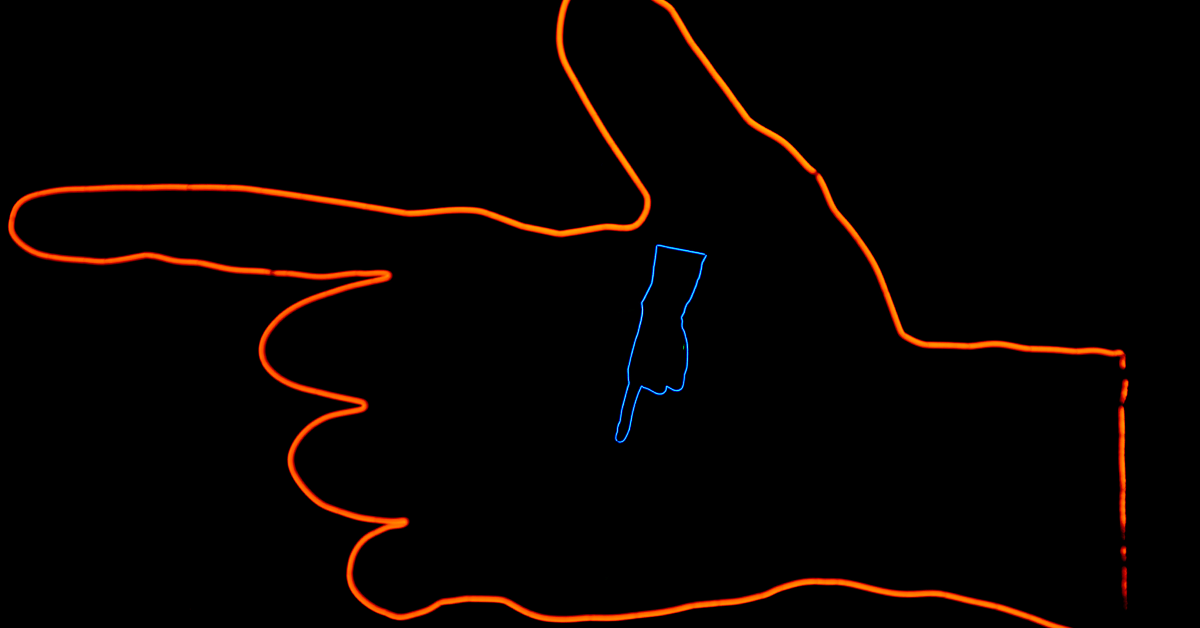Looking to get to the root of a problem?
The five whys is an investigative process that delves into cause-and-effect relationships, providing insight and solutions.
By asking “why” up to 5 consecutive times, you can uncover hidden patterns in the problem area – revealing its fundamental nature for effective resolution.
5 reasons to use the 5 whys:
- Identify the root cause of a technical problem
- Dig deeper during user interviews to uncover motivations
- During user testing to understand a users reactions
- When evaluating and selecting ideas to understand preferences
- To get clarity from stakeholders when directions are vague
How to use the 5 whys technique:
- Identify a problem that you want to solve
- Write a problem statement that describes the issue
- Read the problem statement and ask, “Why?”
- Consider the answer and write it down
- Now, look at the answer and ask, “Why?” again
- The more times you ask the question, the deeper you’ll get
- Eventually, you’ll land on a root cause
- Re-write your problem statement based on your findings
In this article, you’ll get a template for how to run a 5 whys workshop and tips on how to use this technique effectively.
What Is the 5 Whys Technique, and Why Is It Useful?
When it comes to problem solving, it’s critically important to go beyond surface-level symptoms and discover the underlying cause of an issue.
Otherwise, teams risk wasting precious resources on fruitless attempts to solve a problem that isn’t getting to the heart of the matter.
Acting on assumptions is not a viable solution, as this often fails to address systemic or structural issues inherent in any given challenge.
It’s important to go beyond surface-level symptoms and discover the underlying cause of an issue.
The best outcome comes from diving deep into the specifics of an issue and collaboratively developing creative solutions with all stakeholders present.
In this way, teams can work together to uncover the core aspects at play and strategize approaches that resolve long-term, sustainable solutions–ensuring future successes!
The 5 Whys technique was initially developed by Sakichi Toyoda for Toyota industries in the early 1900s as a root cause analysis technique to identify and resolve different root causes in the Toyota production system.
Initially used in the manufacturing process, it has since become widely used by UX designers, Design Thinkers, and innovators of all types as an effective tool for problem-solving and business analysis.
How to Run a 5 Whys Workshop
Working together to utilize Design Thinking tools can make all the difference in solving any issue.
Combining an array of backgrounds, from experienced professionals to total newbies, creates a dynamic environment for thought provoking conversation and uncovering under-the-radar opportunities that may have otherwise gone unnoticed.
Plus, it’ll encourage stakeholder involvement and build team morale, both critical ingredients for achieving objectives.
Here’s how to run a 5 whys design thinking workshop:
- Prepare a problem statement and gather information – Write a problem statement describing the issue you’ve identified. See what information, data, and insights you can collect about the problem that could help the team during the workshop.
- Choose a team of problem solvers and prepare the activities – Select up to 6 people who will help you solve this problem. More than 6 make it more difficult for people to have a voice. Ensure there is a diverse mix of skillsets and expertise in the room.
- Introduce your team to the problem – Start the session by reading the problem statement. Put it somewhere that everyone can see it. Give everyone a few minutes to write their own experiences and insights about the problem. Discuss them as a group and review the information and insights you prepared for the session.
- Ask your team, “why did this happen?” and brainstorm ideas – Give everyone a few minutes to write down why they think the problem occurred. Then put each idea on a sticky note where they’re visible to everyone, and discuss them as a group.
- Write a new problem statement and repeat the process 5 times – Based on the discussions you’ve had, agree together on what the following problem statement should be, write this down and frame it as a problem statement. Now repeat the process until you’re happy with the result.
- Write one final – root cause – problem statement – By now; you should deeply understand the elements and conditions that affect your problem area. Use this information to write a final problem statement that describes the root cause.
An Example of The 5 Whys in Action and the Result It Produces
Here’s an example that a UX design or software development team might come across.
Let’s say you’ve noticed that the bounce rate is high for a landing page, and you’re receiving customer feedback where users express frustration at not being able to understand the information on the page.
You’re starting problem statement could be:
Visitors to our landing page get frustrated that they can’t find the information they need to help them complete their tasks.
Why?
Because so much information is expressed confusingly, it’s hard to pick out the relevant points.
Why?
Because the content on the page has been written over time by multiple copywriters, it’s fragmented and inconsistent.
Why?
Because we’ve had several new copywriters and stakeholders over the years with different styles and ideas about what information should be included.
Why?
Because it isn’t clear what the customer’s needs are and what value the content is intended to create.
Why?
Because we don’t have a content style guide to ensure consistency and we haven’t reviewed the page and conducted user research to write a clear value proposition for this area of the site.
And there you go; we have a problem statement that addresses the root cause of the problem and provides a solid foundation on us to build upon.
If we’d tried to solve the initial problem, we might have created a solution that solves the symptom rather than the problem.
For example, we might have just reduced the page’s text and made the key takeaways more prominent.
But in creating a content style guide and conducting our research, we can standardize things moving forward, create some guidelines and prevent similar issues from arising.
7 Tips to Use the 5 Whys Effectively
- Start with a clear and actionable problem statement.
- Avoid jumping to conclusions too early.
- Even if the answer seems obvious, try it anyway.
- You can do it alone, but you’ll get better solutions from a group.
- If it isn’t apparent what to ask “Why?” about, brainstorm a few variations.
- If it isn’t working, try reframing the problem statement.
- When running a workshop, bring in some insights and stimulus.
At Which Point in the Design Process Is It Useful?
The 5 whys technique is helpful throughout the design thinking process and can be adapted to many different scenarios based on your needs.
Originally it was a technique for identifying the root causes of process issues, but design thinkers have started to apply it whenever a deeper understanding of something is required.
It’s often beneficial during the empathize phase when you want to dig deeper to understand what issues affect people and what motivations drive their behavior.
The technique is most useful in Design Thinking when you need to understand people’s needs, expectations, and motivations.
It’s beneficial during the define phase when you want to challenge and reframe your problem statement to see if another framing can open new opportunities.
It can be used during ideation to evaluate and select ideas. If someone has an opinion about which idea should be taken forward, you can use the 5 whys to understand their preference.
During testing, as you observe customers using the prototype, you can watch for cues in their behavior that could signal friction or dissatisfaction. The 5 whys can help you here to understand what you’ve observed.
Asking the Right Why’s
The 5 whys method is an effective problem-solving and analysis tool that can produce meaningful insights when used in the right context.
If you are unsure what the starting point should be for your ‘whys,’ brainstorm some options until you find the right direction.
A good problem statement or clear issue in mind is necessary to ensure your first ‘why’ is meaningful.
Having a good problem statement or clear issue in mind as a starting point will ensure your first ‘why’ is meaningful.
Depending on the situation, research may also be needed to gain enough insight to answer each ‘why,’ while more straightforward scenarios might already have sufficient information.
Criticisms of the 5 Whys Technique
The 5 whys technique is a popular troubleshooting methodology used to quickly and effectively identify the root cause of an issue.
While helpful, the technique has garnered some criticism because it may be too simplistic in some cases and not appropriate for complex problems.
Some believe that the 5 whys technique does not always lead to a complete view of an issue.
Some believe that, while useful as a starting point, the 5 whys technique doesn’t always lead to a complete or holistic view of the issue.
Additionally, since it requires a certain level of assumption making, there is also the potential for incorrect analysis if incorrect assumptions are made.
Moreover, even when applied correctly, some believe that the 5 whys approach oversimplifies complex systemic issues, making it challenging to drive meaningful and sustainable solutions.
Takeaways
- The 5 whys is an investigative process that delves into cause-and-effect relationships, providing insight and solutions.
- Asking “why” up to 5 consecutive times can uncover hidden patterns in the problem area – revealing its fundamental nature for effective resolution.
- The technique is most useful in Design Thinking when you need to understand people’s needs, expectations, and motivations.
- It’s a popular tool in Human Centered Design and creative thinking processes like the Design Sprint and the design cycle.
- Having a good problem statement or clear issue in mind as a starting point will ensure your first ‘why’ is meaningful.


